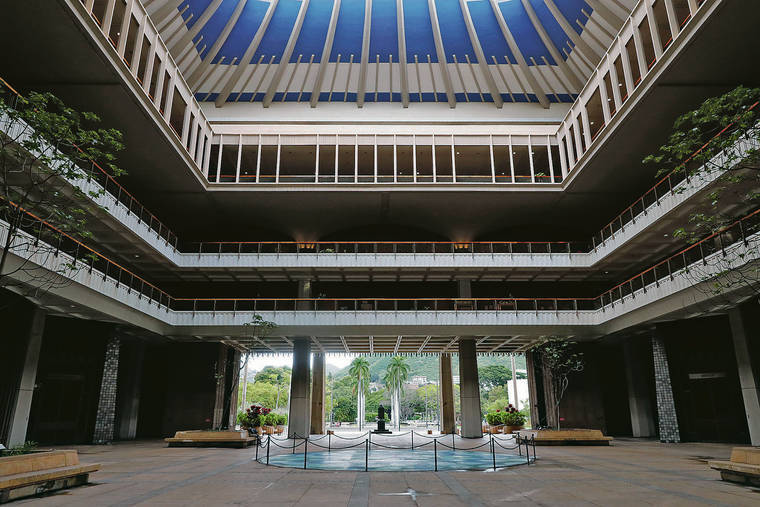How to identify, isolate and treat the growing spread of COVID-19 among vulnerable populations was among the primary concerns discussed by legislators Friday during a House Committee on Human Services and Homelessness informational meeting.
A major focus of the meeting was to make the public aware of resources available to the homeless and those with behavioral health problems. One resource established is the Behavioral Health & Homeless Statewide Unified Response Group’s website at www.bhhsurg.hawaii.gov. The resources on the site include screening tools, PPE and resilience hubs and weekly webinars to stay informed, among others.
“Most of our shelters provide access to computers, laptops and Wi-Fi services,” said Sharon Hirota, executive assistant to Mayor Harry Kim, about accessibility to the resources for those in Hawaii County. “If people wanted to go on their own and find resources, they’d be able to do that. If they’re in the shelters, there are shelter monitors and case managers that help them navigate the system. In regards to those that are on the street in both East and West Hawaii, we have outreach teams that are out, in some cases on a daily basis, to provide information to those unsheltered.”
Scott Morishige, the Gov. David Ige’s Coordinator on Homelessness, revealed during the meeting that 70 homeless individuals across the state have tested positive to date, with 62 coming in the past month. Of these, zero active cases are on the Big Island, according to a statement from Bridging the Gap read by committee Chairwoman Rep. Joy San Buenaventura (D-Puna).
While the exact number of infections among the homeless population is unclear, Morishige insisted the data presented Friday was a good snapshot of the current situation. San Buenaventura added that the statement from Bridging the Gap showed a testing rate of 77% of Hawaii County’s homeless population.
“Early on, and as part of our shelter operations, they’ve been putting into place temperature checks,” said Hirota of the county’s shelter operator HOPE Services. “At the peak of things in April, the providers had made arrangements to have their clients who were at the shelters tested.”
Also speaking at the meeting was Dr. Victoria Fan, associate professor of Health Policy at the University of Hawaii at Manoa, who highlighted the recent jump in facilities meant to house those who cannot self-isolate in their own homes as a means to control the outbreak.
“The quadrupling of isolation and quarantine facilities in the last 17 days is mind-boggling,” said Fan.
Department of Health Behavioral Health Administration Deputy Director Edward Mersereau noted that though 194 of Oahu’s 293 units are open, he expects an incoming jump with the aim of 70,000 additional tests in the coming two weeks to stress the system; some 250 more units are expected in the upcoming few days.
The number of these units on neighbor islands was not given despite multiple requests from San Buenaventura. Morishige did note, however, that there are rooms set aside in both Hilo and West Hawaii.
The need for increased facilities to house COVID-positive residents who are unable to self-isolate comes at a time when there’s increased worry for some about remaining in their homes. While Gov. David Ige has extended the state’s moratorium on residential evictions through September, the worry about a surge of evictions once the moratorium is lifted remains.
Organizations across Hawaii County have been working to launch and expand programs throughout the Big Island to help residents navigate the housing issues they may face.
In addition to a handful of programs, including the Community Development Block Grant and the recently launched Rent and Mortgage Assistance Program, on the Big Island, Hope Services has been working to make sure residents in need are aware of the multiple paths offered to help prevent evictions.
“There’s financial counseling available through Hawaii First Credit Union; they do financial navigation,” said Hope Services’ CEO Brandee Menino. “… The third bucket I have in my mind are the mediation centers in our community: Kuikahi Mediation Center and West Hawaii Mediation Center are offering renter and landlord mediation services to talk through a payment plan or compromise that they can work together to prevent evictions.”
Hope Services, along with Hawaiian Community Assets/Hawaii Community Lending, Hawaii First Federal Credit Union, Neighborhood Place of Puna, Hawaii Island Home for Recovery and Habitat for Humanity Hawaii Island are working together to provide services islandwide. In addition, Hawaii County’s housing administrator in the Office of Housing and Community Development Duane Hosaka recommends those facing eviction to contact Legal Aid Society of Hawaii for advice.
With the multitude of potential options, the goal is to prevent as many people on the Big Island from losing their homes as possible.
“These different services are all working together to ensure it’s available to households who may be impacted by COVID,” said Menino. “We’re just trying to do our best with the resources available.”

